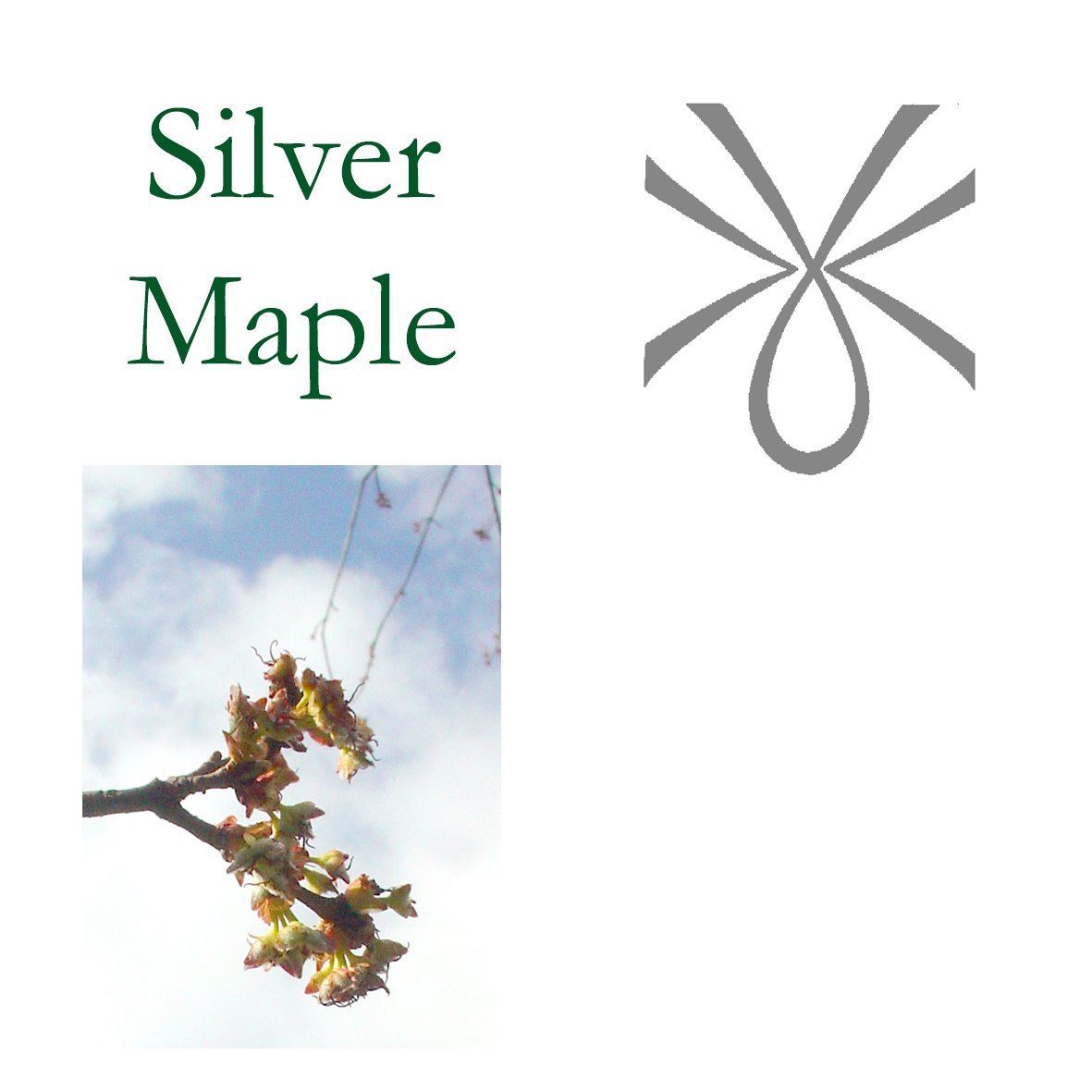SILVER MAPLE (Acer saccerinum)
Key: Moods
Many maples can be found planted throughout Britain for their decorative colours and shapes. Silver maple comes from the eastern coast of North America where it is one of the main sources of sugar and maple syrup extracted from the sap in springtime. In Britain the sugar content is not high enough for this use, but silver maple is one of the most widely planted as it is hardy (especially in the south of Britain), and grows to 100ft (30m) with an open crown that casts little shade. Silver maple flowers in early spring with small reddish flowers appearing on the shoots before the leaves open. Silver maple can be easily identified by its rounded, deeply lobed leaves and irregular teeth. The undersides show silver-green in the wind giving the tree a subtle, shifting colouration.
Silver maple essence helps to balance the flow of energy through the body. It is particularly useful for integrating the various meridians into a more balanced flow. Silver maple reduces energy blocks and turbulence, increasing the vitality and life-energy available at any one time.
Mood swings can be regulated and evened out, particularly where they are initiated by chemical factors within the blood chemistry. A change of mood affects the constituents of the blood and similarly an excess of some chemicals can alter mood. Silver maple helps to speed up the normalisation of blood chemistry and also seems to strengthen many aspects of the circulatory system.
Where there is a harshness experienced in one’s moods, or where there is sensitivity to food substances that results in mood swings, such as hyperactivity or lethargy, this essence can help the body to restore balance.
Like all maples, silver maple has an energy that increases the experience of stability and sweetness in life.
Signature: The sweet, sugar-rich sap of silver maple : the flow of life-energy and sustenance through the body’s subtle channels and circulatory systems.
Changing moods: the shifting colours as the leaves are turned in the breeze to reveal the light undersides and then the darker tops of the leaves.

